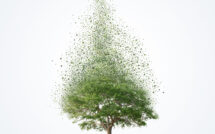

In this section of Campus, EuropeNow features a selection of scholarly articles and books on topics pertinent to the teaching of Europe or teaching in Europe that were published within the last 5 years. This dynamic bibliography, with monthly installments, seeks to highlight both pedagogy research and critical analyses of debates taking place in higher education in and about Europe.
1. Understanding Atrocities: Remembering, Representing, and Teaching Genocide
Edited by Scott W. Murray
At The University of Calgary Press
Abstract: How do we understand and represent atrocities? What are the challenges we face in teaching and learning about extreme events? This is a multi-focused, multidisciplinary exploration of key questions in contemporary genocide studies. Understanding Atrocities is a wide-ranging collection of essays bridging scholarly and community-based efforts to understand and respond to the global, transhistorical problem of genocide. The essays in this volume investigate how evolving, contemporary views on mass atrocity frame and complicate the possibilities for the understanding and prevention of genocide. The contributors ask, among other things, what are the limits of the law, of history, of literature, and of education in understanding and representing genocidal violence? What are the challenges we face in teaching and learning about extreme events such as these, and how does the language we use contribute to or impair what can be taught and learned about genocide? Who gets to decide if it’s genocide and who its victims are? And how does the demonization of perpetrators of atrocity prevent us from confronting the complicity of others, or of ourselves? Through a multi-focused and multidisciplinary investigation of these questions, Understanding Atrocities demonstrates the vibrancy and breadth of the contemporary state of genocide studies.
2. Online Lecture Series: Studying Sources from the United States Holocaust Memorial Museum
By The United States Holocaust Memorial Museum
Abstract: These 20-minute lectures feature renowned scholars from Holocaust studies and beyond. In the lectures, scholars discuss primary sources that illuminate topics using photographs, propaganda, diaries, short films, and artwork drawn from the Museum’s vast collection and other sources. Lectures include Holocaust Photographs (Daniel Magilow, University of Tennessee-Knoxville), The Holocaust Diary of Irene Hauser (Alexandra Garbarini, Williams College) and A History of Eugenics (Patricia Heberer Rice, USHMM and Lutz Kaelber, University of Vermont.)
3. Webcast: Drawing It Out: Graphic Novels, Teenagers, and the Holocaust
Sponsored by the Museum of Jewish Heritage: A Living Memorial to the Holocaust
At The Museum of Jewish Heritage: A Living Memorial to the Holocaust
Abstract: Graphic novels have long been emerging as a way to tell difficult and often traumatic stories. Since the late 1970s, they have also been a medium for telling stories about the Holocaust. From true stories to fictional ones, graphic novels are used to tell all kinds of stories about this time. Recently, authors and illustrators have been turning to stories about teenagers during the Holocaust. This Museum program explores the depiction of teenagers in Holocaust graphic novels with David Polonsky, illustrator of “Anne Frank’s Diary: The Graphic Adaptation,” Ken Krimstein, author of “When I Grow Up: The Lost Autobiographies of Six Yiddish Teens,” and R.J. Palacio, author of “White Bird: A Wonder Story.” The conversation is moderated by AJ Frost, Newsletter Editor and Staff Writer for the Comics Beat.
4. Unusual approaches to teaching the Holocaust
By Jan Láníček, Andy Pearce, Danielle Raffaele, Keith Rathbone and Edward Westermann
In The Australian Journal of Jewish Studies
Abstract: “The aim of the article is to stimulate discussions about various educational approaches, their benefits, but also their pitfalls. In 2020, educational systems all over the world suffered unprecedented challenges during the COVID-19 pandemic. It is possible that this crisis will forever change the way in which we deliver information and how we engage with students. In some cases, it has hastened the move to online teaching, which had started years ago, but now even educators who had been reluctant to enter the online space have had no other option available. After receiving crash courses of several hours, they were thrown into the deep water of online teaching. The forced move to Zoom, Blackboard Collaborate Ultra or Teams unleashed energy among educators who tried to design new approaches to student learning, benefiting from the immense amount of online opportunities. Not all of the approaches discussed in this contribution have to be delivered online and they can easily be implemented in face-to-face settings as well. But hopefully these ideas – coming from highly-esteemed educators as well as junior scholars – will be of interest to our colleagues and will contribute to the development of teaching strategies globally.” Taken from the introduction to the article.
5. Memorialization, Reconciliation, and Reflection: Teaching the Aftermaths of Genocide in Postwar Europe and Rwanda
By Laura J. Hilton
In The History Teacher
Abstract: Teaching genocide has become a standard topic, especially in high school and university classes focused on twentieth century History. A neglected element of this topic is what occurred once the violence ended, including sites of memorialization and questions of reconciliation, reparations, and justice. Extending student knowledge and contemplation of the aftermaths of genocide helps students create a narrative arc, demonstrating full comprehension of the genocide, while also synthesizing its aftereffects. In addition to laying out a clear rationale for including aftermath in teaching about genocide, the article suggests key resources, especially in terms of primary sources for educators to utilize.
Image: Shutterstock | A unique yellow and white spiral staircase at the Bibliothèque Universitaire de Chevreul of Université Lyon 2 Lumière.
Published on May 1, 2023.




